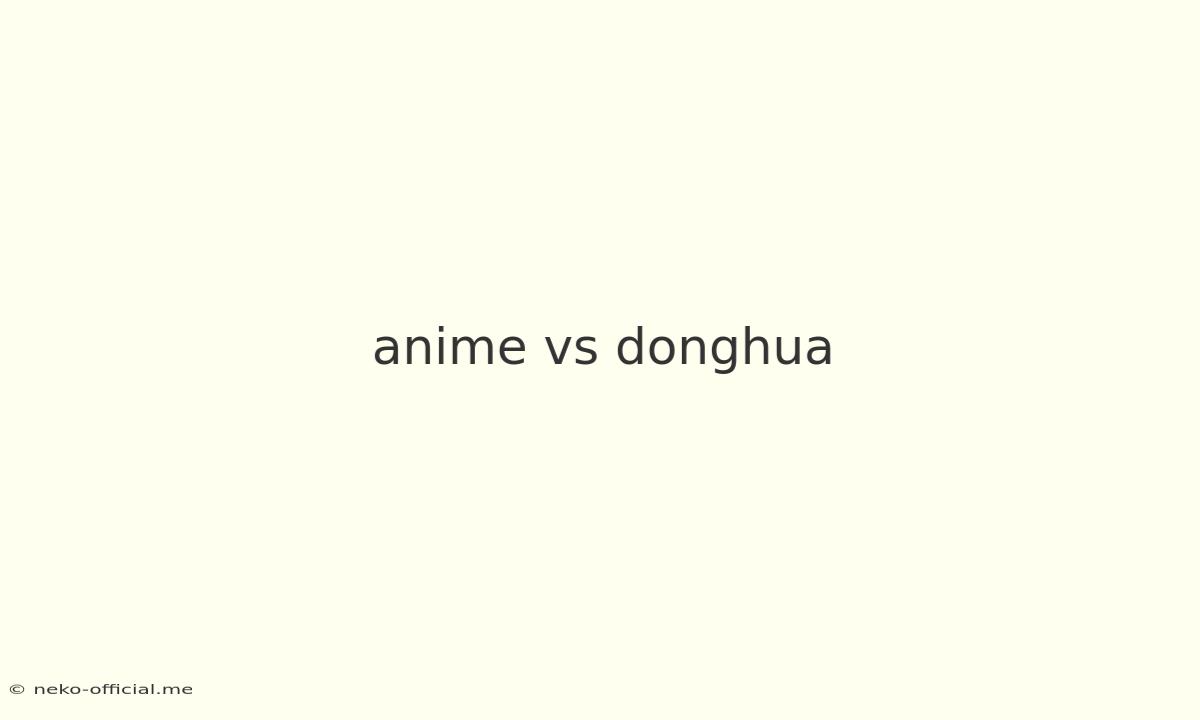Anime vs. Donghua: Exploring the Differences and Similarities
The world of animation is vast and diverse, with two major powerhouses dominating the scene: anime and donghua. While both are forms of animation, they have distinct origins, styles, and characteristics that set them apart. In this article, we dive into the differences and similarities between these two captivating art forms.
Origins and History
Anime refers to animation originating from Japan. Its roots lie in early 20th-century silent films and the influence of Western cartoons like Disney. Anime has evolved over decades, becoming a prominent cultural phenomenon and a global industry.
Donghua, on the other hand, is the term for animation produced in China. Its history dates back to the 1920s with early examples of hand-drawn animation. Donghua went through periods of decline and resurgence, experiencing a recent surge in popularity due to advancements in technology and storytelling.
Art Style and Animation
Anime is renowned for its distinct art style featuring large eyes, vibrant colors, and dynamic action sequences. It often employs expressive character designs, intricate backgrounds, and fluid animation that emphasizes emotion and storytelling.
Donghua exhibits a wide range of art styles influenced by both traditional Chinese art and modern animation techniques. Some donghua adopts a more realistic style, while others embrace a vibrant and stylized aesthetic. The animation techniques in donghua are evolving rapidly, encompassing both traditional hand-drawn methods and advanced 3D animation.
Storytelling and Themes
Anime boasts a wide array of genres and themes, ranging from action and adventure to romance and comedy. It often explores complex characters, intricate storylines, and philosophical ideas. The storytelling in anime can be both heartwarming and thought-provoking.
Donghua is also exploring a diverse range of genres, including fantasy, historical dramas, and sci-fi. It often incorporates elements of Chinese mythology and folklore into its narratives. Donghua stories are increasingly focused on exploring Chinese culture, history, and values.
Production and Industry
Anime has a mature and well-established industry in Japan. It enjoys significant government support and a dedicated fan base worldwide. The production process involves a collaborative effort between studios, animators, voice actors, and composers.
Donghua is a rapidly growing industry in China. It is receiving government support and investment, driving the development of new technologies and studios. The donghua industry is currently witnessing a rise in original content and a greater emphasis on quality storytelling.
Similarities
Despite their differences, anime and donghua share some common ground:
- Both utilize animation as a medium to tell stories.
- They often feature fantasy elements and imaginative worlds.
- They can appeal to a diverse audience, regardless of cultural background.
Conclusion
Anime and donghua are unique and fascinating forms of animation that offer a wealth of artistic expression and storytelling. While they have distinct origins and styles, both continue to captivate audiences worldwide with their vibrant visuals, compelling characters, and engaging narratives. As these industries continue to evolve, it will be exciting to see what new stories and innovations emerge from both anime and donghua.
